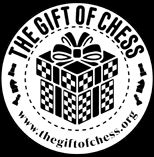July 07, 2014
The Boston Globe Boston, Massachusetts Monday, July 07, 2014 - Page G23 — Chess Notes — The whirling orbit of chess tournaments is encountering a watershed crisis called cheating. Chess Life, published by the U.S. Chess Federation, made the problem its June cover story, even placing it on the Internet free of charge, to underline the gravity of the situation. The article is by Ken Regan, a former chess prodigy who has drifted from chess to the world of computer science. In the process, he has turned his attention to the statistical challenge of catching cheats who use computers.
Until recently, FIDE had done nothing concrete to deal with the problem. The leading example of the subversive activity is that of Borislav Ivanov, a young Bulgarian who gained “infamy” for several unpredictable good results.
It was thought that Ivanov had a computer somewhere on his person but he refused to be searched. Though the Bulgarian Chess Federation (BCF) was suspicious, it hesitated to ban him for lack of proof. It turned to Regan, who convinced the organization that Ivanov was cheating. Based on an algorithm, Regan's analysis stated that if Ivanov was not cheating, his performances would fall into the statistical range of less than 1 chance in 5 million. This helped persuade the BCF to suspend Ivanov for four months. The Ivanov case, along with others, pushed FIDE to deal with the problem. It formed the Anti-Cheating Committee, with Regan as a member, to look into the problem.
The Chess Life article goes into some detail in describing Regan's statistical approach, and this column abdicates any ability to explain it fully. Regan points out that a multiple choice exam determines grades by offering possible solutions to a problem. In chess, the number of solutions depends on the number of moves that can be made. The computer can gauge move quality, the three best given extra weight in evaluating solutions. Cheaters often use second best moves but still can get caught. Regan grades the player over a series of moves and plots a graph showing a curve of performance. Regan notes sensitivity the ability to sense small differences in moves, and consistency in accurate play. He then compares the recent performance to the player's performance pursuant to his prior Elo rating and the difference is called z, apparently a measure of cheating. The process is no doubt far more complicated, but Regan clearly believes FIDE could identify cheaters with valid statistical proof. Though no doubt players can experience an honest miracle tournament now and then, miracles don't happen often for one person.
Regan's technology could be the light at the end of the tunnel, though we do not put it past players to work assiduously to beat the system. Read More






















